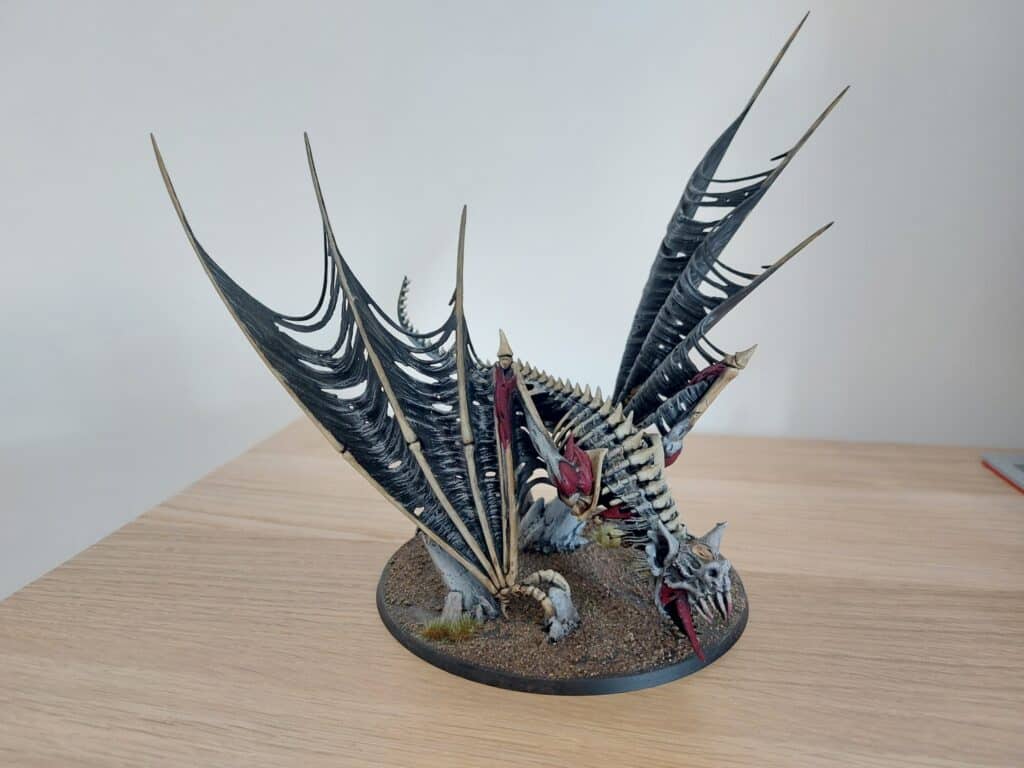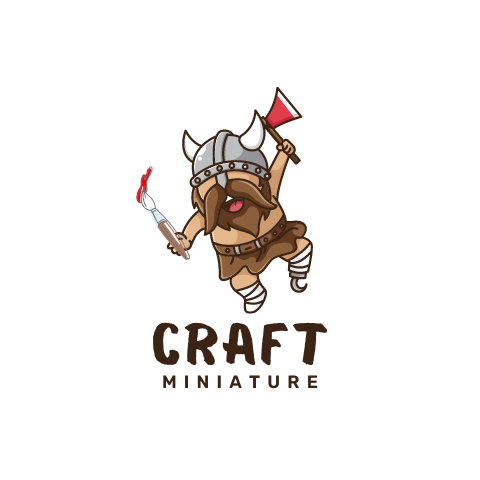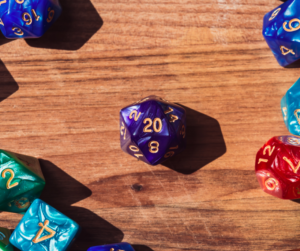Modelling paint is designed to be thick so that it does not run and will cover the model evenly. However, there may be times when you need to thin the paint to achieve a particular effect, smoother finish, and better coverage.
The best method to thin model paint is with paint mediums and thinners specific to the type of paint you are using. These products are specifically designed for models and will ensure that you gain great coverage and can provide many other benefits, including UV protection and Anti-Cracking.
You can thin model paint with various substances, including mineral water, alcohol, and paint mediums. This article will discuss how to thin model paint using these three substances.

What is model paint made from?
Before we discuss how to thin model paint, it is essential to understand what it is made from. Model paint is typically made from a combination of pigment, binder, and solvent. The pigment gives the paint its colour. The binder helps hold the pigment together and provides the paint with its consistency. The solvent helps to thin the paint and makes it easier to apply.
What is the process of thinning paint?
Thinning paint is adding a substance to paint to make it more fluid. This is often necessary to achieve a particular effect, such as a thin coat of paint. Various substances can be used to thin paint, including water, alcohol, and paint mediums.
Why thin model paint?
There are a few reasons why you might need to thin your model paint.
Reason 1: The first is if the paint is too thick and does not flow evenly onto the model’s surface. This can cause the paint to dry unevenly and result in an undesirable finish.
Reason 2: The second reason is if you want to achieve a particular effect with the paint. For example, if you’re going to create a light haze or fog effect, thinning the paint can help you to achieve this.
Reason 3: The third reason is if you are using an airbrush to apply the paint. If the paint is too thick, it will not flow through the airbrush properly and result in an uneven finish.
What can you use to thin paint?
Several products work perfectly for thinning model paint, and some that you should avoid:
What should I use to thin paint?
Distilled Water – Avoid using regular water to thin your paint as it contains minerals that can damage the paint. Only use distilled water.
Isopropyl Alcohol – Also known as rubbing alcohol, this is an excellent choice for thinning both water-based and oil-based paints. It evaporates quickly, so there is less risk of damaging the paint.
Pouring Medium – This is a water-based medium designed explicitly for thinning paint. It is available from most art supply stores.
Flow Medium – This is an oil-based medium designed explicitly for thinning paint. It is available from most art supply stores.
What should I not use to thin paint?
White Spirits – This petroleum-based solvent is commonly used to thin oil-based paint. However, it can damage some types of paint, so it is best to avoid using it.
Turpentine – is a strong solvent sometimes used to thin oil-based paint. However, it can damage some types of paint, so it is best to avoid using it.
Mineral Spirits – This petroleum-based solvent is commonly used to thin oil-based paint. However, it can damage some types of paint, so it is best to avoid using it.
Tap Water – Regular water contains minerals that can damage paint, so it should be avoided.
How to thin paint?
What you will need:
- Your chosen thinner.
- Acrylic Paint
- Pallet or Kitchen Towel
- Paint Brush
- Check the thickness of your paint – dip your paintbrush in your chosen paint and brush the paint on your pallet. Check the current thickness and paint strokes on the pallet.
- Add thinner to a separate container – if you’re using water to thin your paint, add it to a different container before adding it to your paint. This will help you control how much water you’re using.
- Apply thinner to the paint on the pallet – using a paintbrush, apply water to the paint on your pallet.
- Apply thinner and repeat – add thinner to the paint until it reaches the desired consistency.
- Test paint on the pallet – before applying the paint to your model, test it on a separate piece of material to ensure that you’re happy with the consistency and colour.
- Wipe excess paint from the brush – before applying the paint to your model, remove any excess from your paintbrush by wiping it on the edge of your container or a paper towel.
- Apply to the model and allow it to dry – once you’re happy with the paint, apply it to your model. Allow the paint to dry completely before moving on to the next step.
- Apply another coat if required – if you can still see the undercoat or want a darker colour, apply another coat of paint.

Thinning model paint with water
One of the easiest ways to thin model paint is with water. Add a few drops of water to the paint and stir until the desired consistency is achieved. One thing to keep in mind is that water can also change the color of the paint, so be sure to test it on a scrap piece of material before applying it to your model.
You will want to mix your acrylic paints with 1:2 parts water with your chosen paint. This will ensure that your paint provides excellent coverage but is easier to work with. If you use more water, your paint will offer more coverage but be harder to manage. If you continue to add water to your paint, there will come a point where it will come to a wash.
How to make the most out of using water for paint thinning?
As we said before, water can change the color of your paint. To prevent this, consider using distilled water instead of regular tap water. You will also want to apply multiple coats if you want the colour to be darker. Adding water to thin your paint will make the colour lighter.
Another thing to remember is that thinner paint will dry faster than thicker paint. This means that you’ll need to work quickly when using watered-down paint.
Remove excess paint from your brush before applying the brush to your model. You can do this by wiping it on the edge of your paint container or a paper towel.
Thinning model paint with acrylic medium
Another option for thinning paint is to use an acrylic medium. Acrylic mediums are formulated specifically for use with acrylic paints and can help to thin the paint without changing its color. Add a small amount of medium to the paint and stir until the desired consistency is achieved. A good ratio to start with is 1:1 parts paint to medium.
Using acrylic paint medium is the best method to gain outstanding coverage and control over your desired paint viscosity. These mediums have been designed to ensure you get the best out of your model armies and miniatures. Many types of paint mediums on the market have been specifically designed to enhance your painting. We have listed several additives mediums that can provide for your next modeling project.
- UV resistance – This will be necessary if you are working with a clear coating or want to provide a final varnish.
- Glazing Effect – These mediums give your models a glaze and shimmer effect. Some people love this look, whereas others do not. It will come down to your personal preference.
- Anti-Cracking – Nothing is worse than dropping your models and finding cracking or flaking paint.
- Dry Time – This is an important consideration, especially if you are working on a time-sensitive project.
- Increase Flexibility – You will want to consider this if you are working with brittle materials that might crack under pressure.
How to thin paint with the acrylic medium?
Just like with water, you will want to start with a 1:1 ratio of paint to medium. You can always add more medium if you find that your paint is still too thick. A good rule of thumb is to add a small amount of medium at a time until you achieve the desired consistency.
Remember that thinner paint will dry faster than thicker paint. This means that you’ll need to work quickly when using medium-thinned paint.
Remove excess paint from your brush before applying the brush to your model. You can do this by wiping it on the edge of your paint container or a paper towel.
Thinning model paint with alcohol
Another option for thinning paint is to use alcohol. Alcohol will not change the color of the paint like water can, but it will evaporate quickly, so be sure to work quickly when using this method. Add a small amount of alcohol to the paint and stir until the desired consistency. A good ratio to start with is 1:1 parts paint to alcohol.
Remember that thinner paint will dry faster than thicker paint. This means that you’ll need to work quickly when using alcohol-thinned paint.
Remove excess paint from your brush before applying the brush to your model. You can do this by wiping it on the edge of your paint container or a paper towel.
How much should you thin paint?
The amount of thinner you add to the paint will depend on the desired effect. A good rule of thumb is to start with a small amount and add more as needed. It’s always better to add thinner than too much and ruin the paint.
What are the benefits and drawbacks of thinning paint?
Benefits
- One of the benefits of thinning paint is that it can help you to achieve a particular effect. For example, if you’re trying to create a light haze or fog, thinning the paint can help you to accomplish this.
- Another benefit of thinning paint is that it can make the paint easier to apply. This is especially true if you are using an airbrush. If the paint is too thick, it will not flow through the airbrush properly and result in an uneven finish.
Drawbacks
- One of the drawbacks of thinning paint is that it can also change the color of the paint. So, test it on a scrap piece of material before applying it to your model.
- Another drawback of thinning paint is that it can make the paint more difficult to control. So, if using an airbrush, practice on a scrap piece of material before trying it on your model.
- The third drawback to thinning your paint is it can make the paint more difficult to apply evenly. This can be especially true if you’re using a brush. So, if you thin your paint, be sure to have a steady hand and take your time when applying it to your model.

How to clean up after thinning paint?
Once you’re done thinning your paint, it’s essential to clean it up properly. If you’re using water, rinse the container with warm water and soap. If you’re using alcohol or paint thinner, dispose of it properly. Never pour these substances down the drain, as they can harm the environment.
Final Thinning Tips
There are a few things to keep in mind regarding thinning paint.
- Start with a small amount of thinner and add more as needed.
- Second, be aware that thinner can change the color of the paint.
- And third, always clean up properly after you’re done thinning the paint.
Final Thoughts
Now that you know how to thin model paint, you can experiment with various techniques to achieve the desired effect. Test the paint on scrap material before applying it to your model. And most importantly, have fun! Paint thinner is the best choice for cleaning up after thinning paint. It will evaporate quickly and not harm the environment. Thanks for reading!


